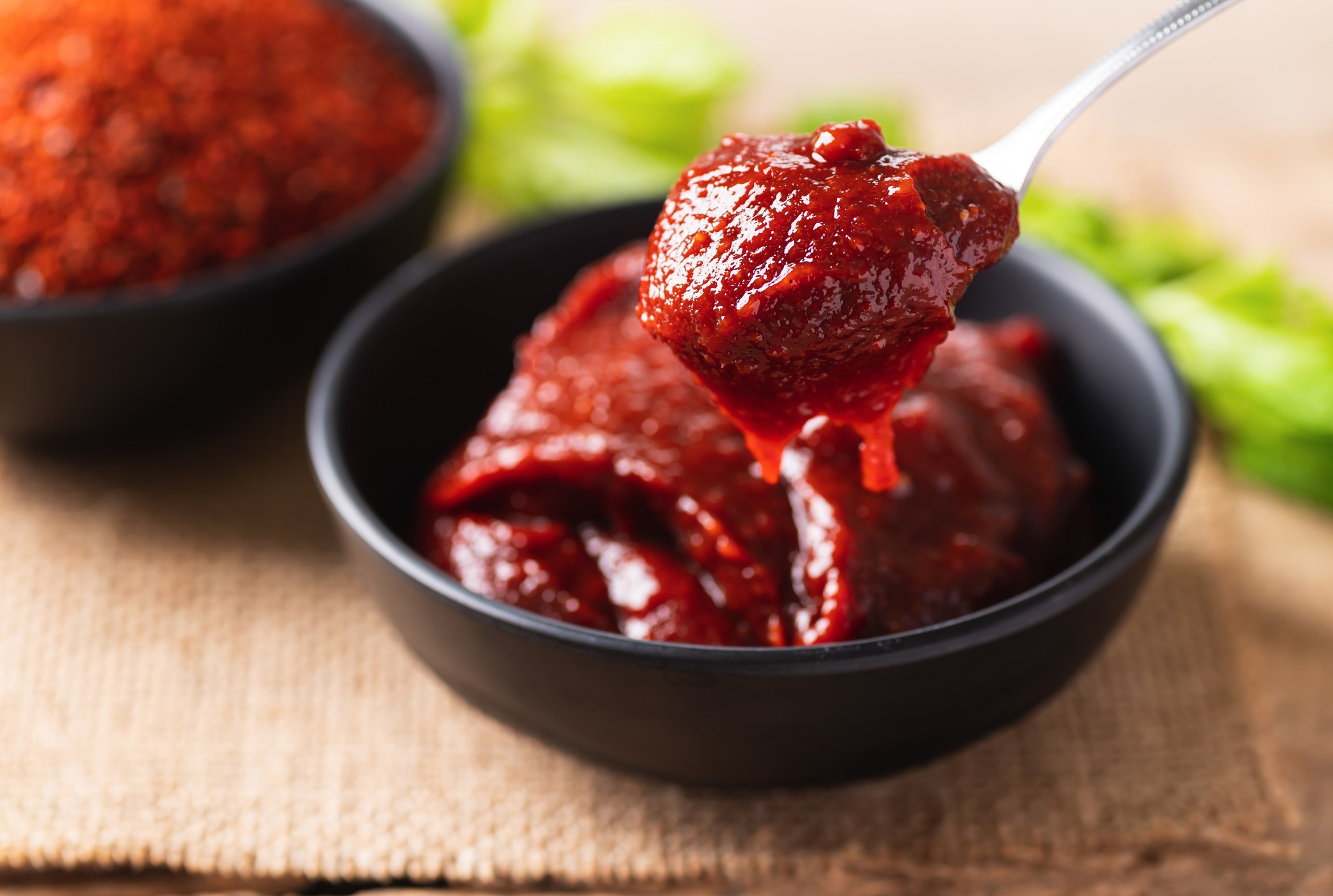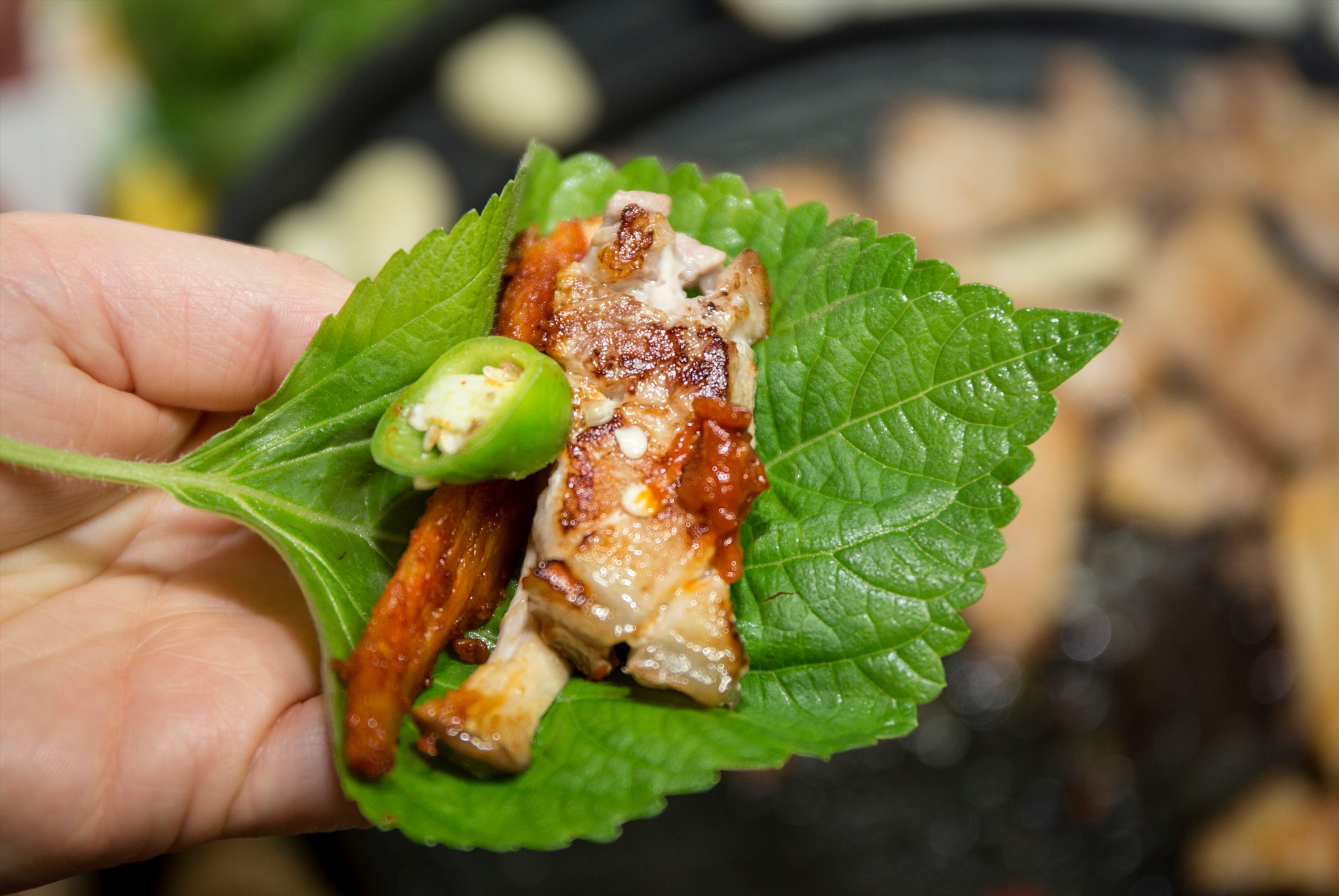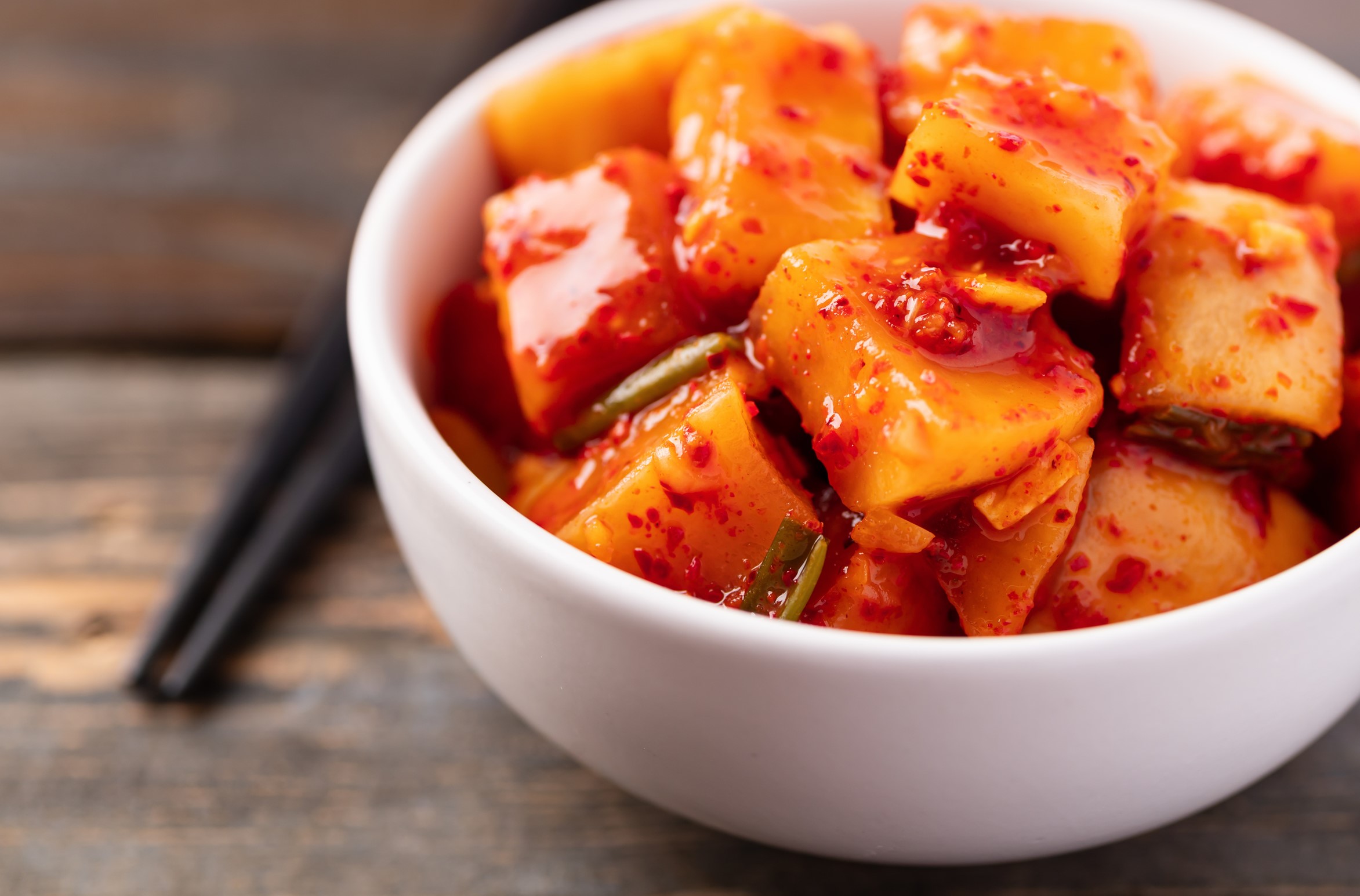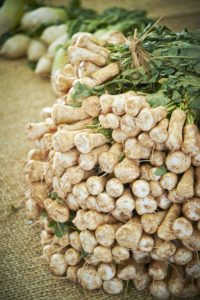Korean Pantry Staples
Ingredients you’ll find in every authentic Korean kitchen.
Traditional Korean flavors are forged by a diverse spectrum of fresh herbs and spices. The flavor profiles of Korean ingredients are nuanced, ranging from notes of spice and pepper to floral and deeply aromatic. To achieve these acute subtle flavors, the list of Korean pantry staples is lengthy — but here are a few of our favorites:
Korean Chili Paste (Gochujang고추장)
Gochujang, a Korean hot pepper paste known for its savory, sweet, and spicy flavor notes, is one of the most commonly used ingredients in Korean cuisine. It’s made of a flavorful blend of fermented soybeans, rice, and Korean chili peppers.
Historically, gochujang was fermented for years at a time in earthenware. These large, brooding pots were placed in an outside area intended for fermenting and preserving foods through the winter. Gochujang continues to be used today for stew bases like in tteokbokki, a dish of spicy rice cakes, and even in marinating Korean meats like bulgogi or braised Korean short rib stew. It’s also usually added to bibimbap, a playful Korean vegetable rice bowl.
Korean Pork Belly (Samgyeopsal 삼겹살)
Korea is one of the top pork-consuming countries in the world. There’s a uniquely strong preference in Korea for cuts of high-fat meats such as the beloved pork belly. Samgyeopsal is a fatty thick strip of pork belly, similar to the Western bacon cuts or Italian cuts of guanciale.
The thick slices of samgyeopsal allow the meat to stay more tender and juicy during the Korean grilling process, creating a buttery, melt-in-your-mouth texture. One traditional way to eat samgyeopsal is by wrapping the meat in dark leafy greens like perilla leaves and garnishing with spicy condiments like kimchi and gochujang. Known in Korean as ssam, this wrap is a perfect representation of the culinary creativity in Korean cuisine.
Korean Radish (Mu 무)
This blunt and short root vegetable is known for its intense flavor, dense flesh, and soft green leaves. Often used as an ingredient in Korean soups & braises, Korean radish adds a mild, earthy flavor to dishes. When raw, it has a subtle peppery sweet flavor, key to Korean dishes like kkakdugi, a radish kimchi commonly eaten as a Korean side dish.
The origins of this pickled vegetable dish comes from the Joseon Dynasty of 1392 A.D. During this time, preserving vegetables like Korean radish was essential for surviving the harsh Korean winters. Koreans traditionally believed that the activity of fermentation and preserving foods unified a family and strengthened their intimate bond.
Find Local Korean Shefs & Meals
If you’re a lover of authentic street food, order some home-cooked Korean food from our local community of chefs — every cook is food safety certified and earns a meaningful income selling their homemade dishes.
- Los Angeles
- San Francisco (Bay Area)
- Chicago
- New York City
- New Jersey
- Seattle
Find your local home-cooked food today!










